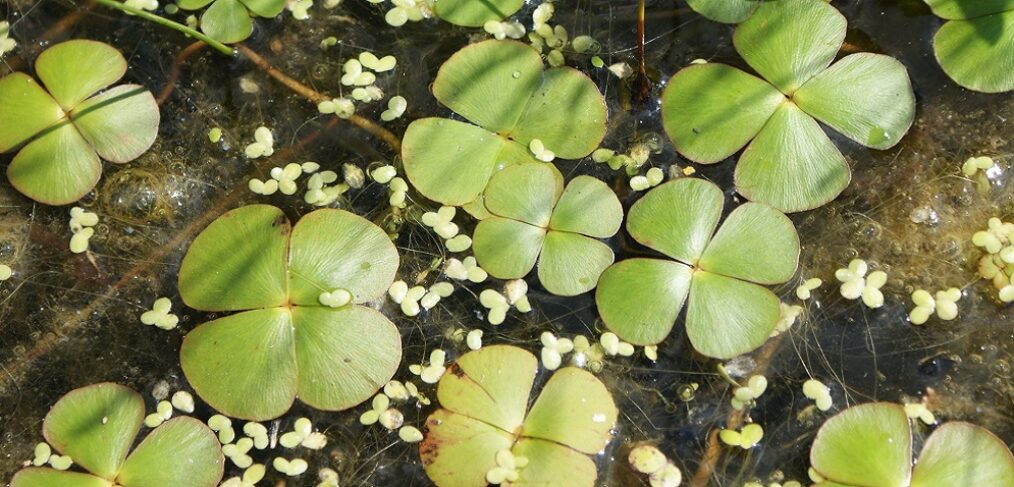
species of the week #39 – four leaf clover
The four leaf clover is a water plant that can only be found in one place in Rhineland-Palatinate: Only in the Altrhein near Altrip the species finds a suitable habitat. Here it was probably planted by pond lovers and thus forms the northernmost occurrence in Germany. Only a single wild form can still be found in Baden-Württemberg. In Bavaria the four known natural habitats are also populated by new plantings.
| Distribution status | Threatened with extinction |
| Remaining deposits | Old Rhine lines near Altrip |
| Last sighting in Rhineland-Palatinate | 2006 near Altrip |
| Habitat | Nutrient-rich waters, which occasionally fall dry |
| Threat | water catchment, nutrient input, climate change |
The leaves form a four-leaf clover with a matt shine on the upper side, whose structure is more reminiscent of a ginkgo leaf than a clover. It has a diameter of 3 to 4 cm and floats on the water surface. The four leaf clover is the only fern genus in which the leaves perform sleeping movements. During the day, the pinnate sections of the leaf blade lie in a plane, in the evening and at night they hang down.
The four leaf clover is able to form water forms or smaller land forms, which differ in appearance, depending on the location. Particularly in waters that dry out more frequently, the clover is smaller and more robust.
The plant reproduces vegetatively through rooted shoots, which develop into independent plants after being detached from the mother plant. So-called sporocarpias, the spore containers of the water ferns, are only formed when the growing species dries up. The spores can survive for decades in the soil. They are mainly spread by waterfowl that carry the sporocarpias attached to their legs.
Hydraulic engineering measures and the abandonment of old forms of use have destroyed many habitats in the past. Shading due to bank vegetation and excessive nutrient enrichment of the waters, for example through intensive use of the adjacent areas, are the main causes of danger for the fern.
The four leaf clover reacts sensitively to competition from other plants and major fluctuations in the water level. If the water level rises, the old leaves die because the leaf stalks are not capable of elongation growth and the plant is forced to form new leaves. If the water level rises quickly, the whole plant may die. This makes it sensitive to droughts and heavy rainfall events as a result of climate change.
Politically necessary:
– Strict protection and promotion of the remaining stands
– In suitable habitat conditions, reintroduction in the vicinity of former growth sites
– Measures against eutrophication and climate change
To the other species of the week
Picture: By Krzysztof Ziarnek, Kenraiz – Own work, CC BY-SA 4.0, https://commons.wikimedia.org/w/index.php?curid=11218144
